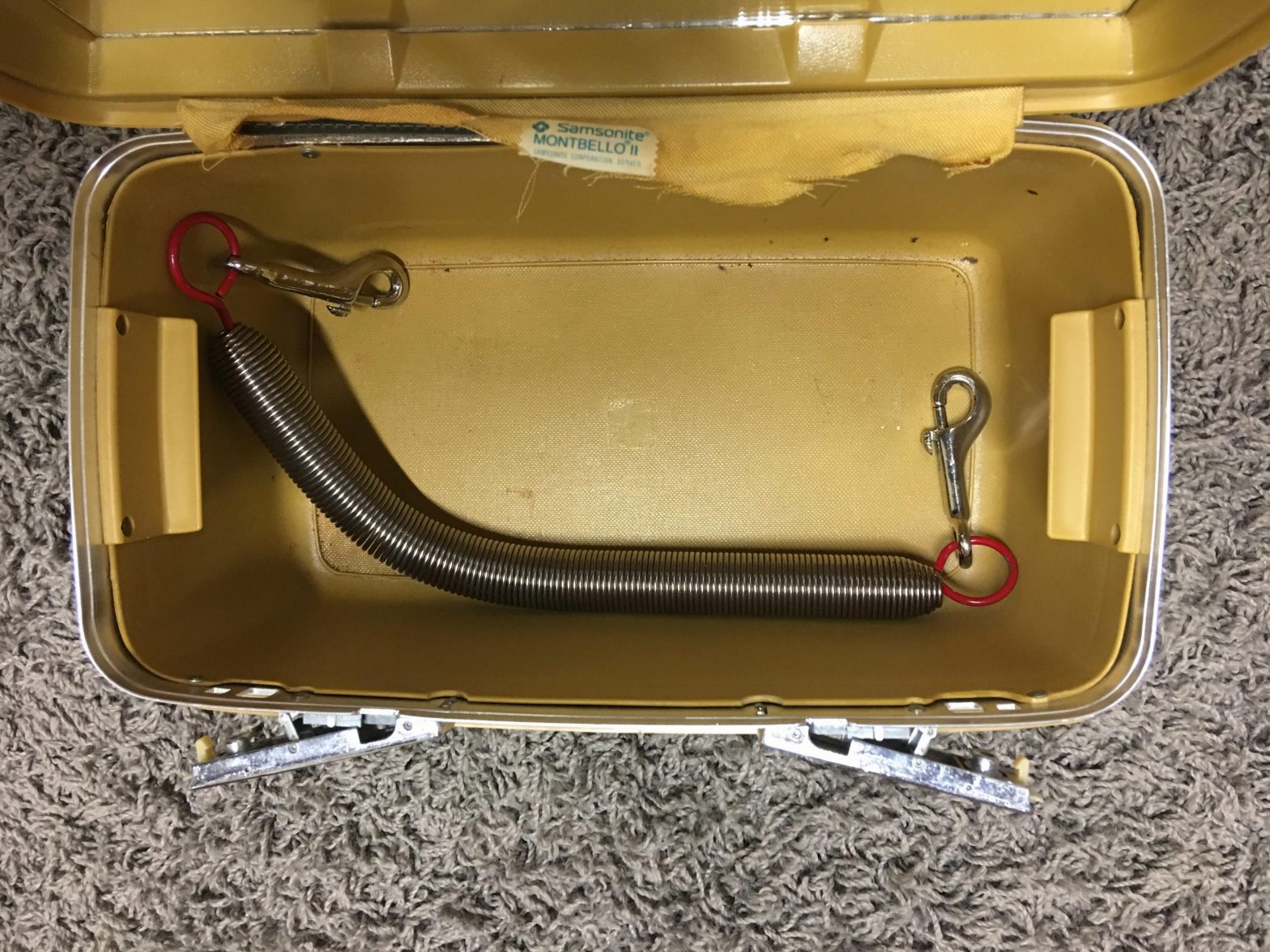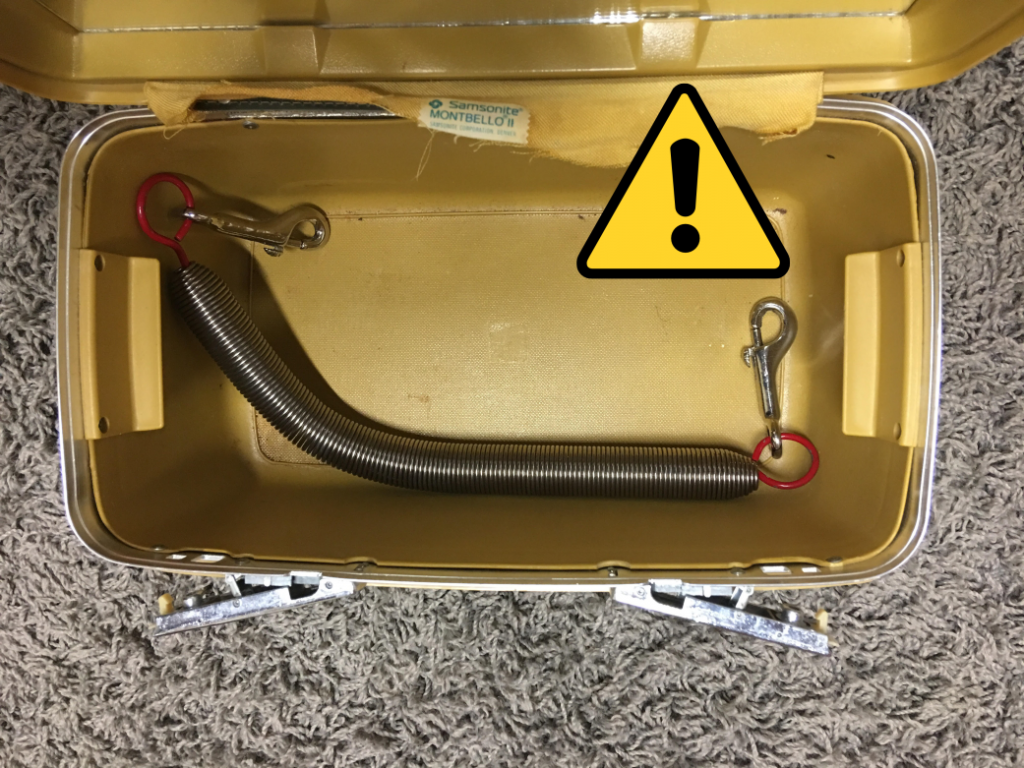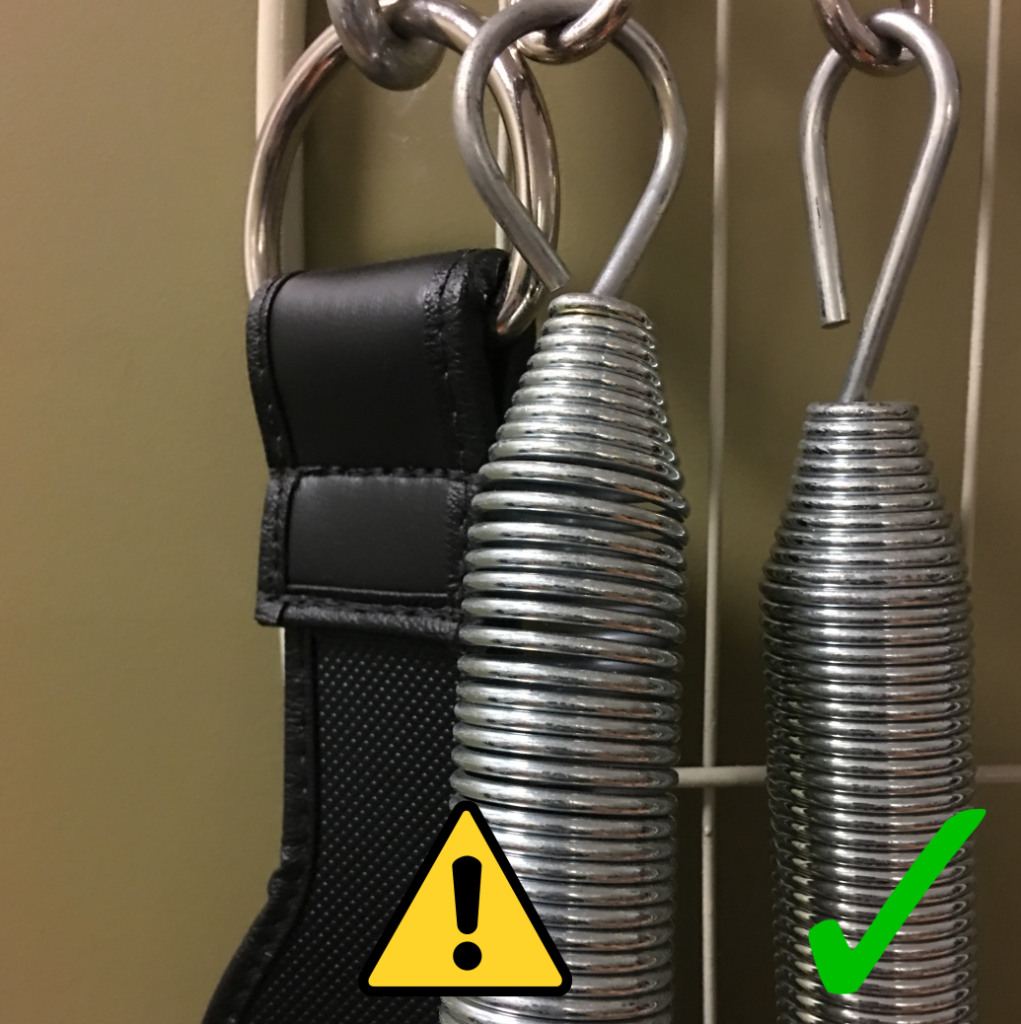
Even if your studio is incredibly busy hosting 8 or 10 Reformer classes per day six days a week, the reality is that your springs aren’t in use more than they are. Therefore, it makes sense to care about how they are stored just as much as how they are used. Here are a few tips on how to store your springs during off-hours to prolong their life and stay safe.
Note: Check out this post if you want to learn when your springs are ready to be replaced, and this post to learn more about the science of springs.

Attach at least 1 regular Reformer spring to springbar
When your students finish class, have them store the Reformer in any gear position with at least one regular spring attached to the springbar. For a Balanced Body machine, this means at least a red spring.
The reason for this is that your carriage should be anchored home for the safety of your staff and clients. The carriage should not be able to freely move if someone happens to come over and lean or sit on it.
When attaching a spring, do not pre-load the spring by attaching it to the top deck hooks or buttons, or using a block to move the carriage further from the springbar. The coils of the spring should still be closed or almost closed.
Store Trapeze Springs in a Straight position
When storing your Trapeze springs, store them either hanging vertically or laying flat on any horizontal surface. Leaving your roll down bar or trapeze swing attached to the springs and hanging from the canopy is fine, as their own weight plus gravity is not going to weaken them over time.
Avoid storing trapeze springs by top-loading a Push-Through Bar, stuffing them in a basket or other container on the floor, or any other position that causes the springs to be held with their coils open.

If you happen to notice that a spring is hanging and some coils are opening (see spring on left in photo below), that is a sign that the strength of the material at that range is compromised and it should be replaced. Hanging springs for storage purposes will not contribute to this deformation, instead, this spring was probably allowed to snap back uncontrolled multiple times throughout its life or stored with a bend in it.

Does leaving a spring hanging or attached to the springbar wear it out faster?
Nope! When springs are wound from music wire, the coils have an initial tension, which is basically the amount of force it requires to separate the coils at the very beginning. That value, plus the spring constant (how many pounds of resistance per inch of extension the spring provides), resists gravity.
Combine the initial tension and spring constant with the fatigue principles I discuss in this blog post, and you’ll see that tiny amounts of stretch of the spring are not going to weaken it to any point that makes a difference to your studio.
Here’s a summary:
- Extension springs have a maximum stretch limit, in our case about 2-3 times their length, which is when they will start to permanently deform (meaning they lose resistance and may not close all the way).
- Springs are designed to be able to cycle over a million cycles belowthat maximum stretch range.
- Bigger extension (more travel) of the spring stresses the spring more than smaller extensions (less travel).
- If a spring is designed to stretch 2.5x its length a million times, it can likely handle a stretch 0.1 times (for example) its length significantly
Springs are a fascinating topic and can easily get dragged out into hours of conversation and lecture. Your guiding principle today should be: don’t store your springs in any manner which causes the coils to stay separated.
Happy Reforming!
This post also appears on Balanced Body’s blog, here.
